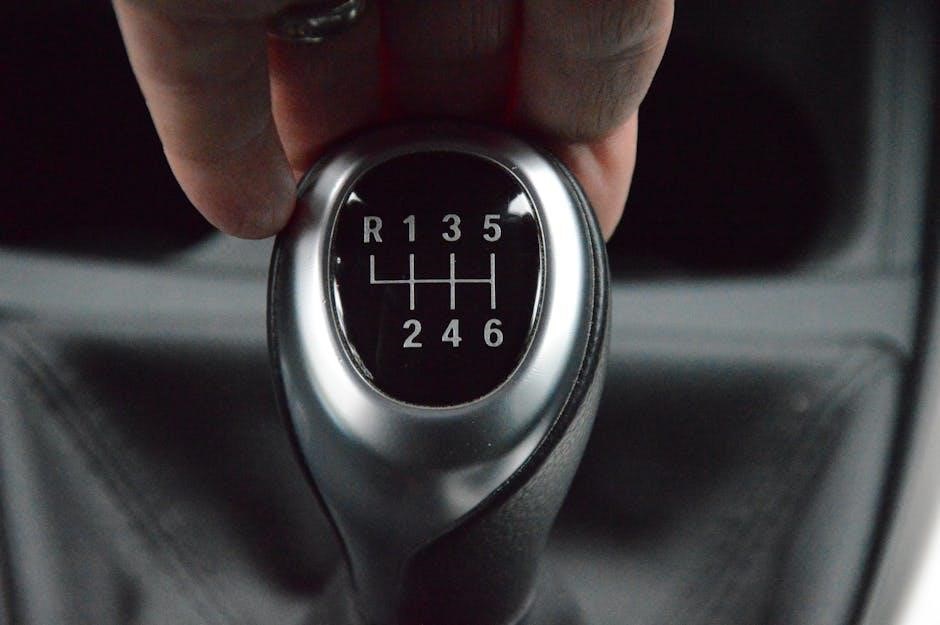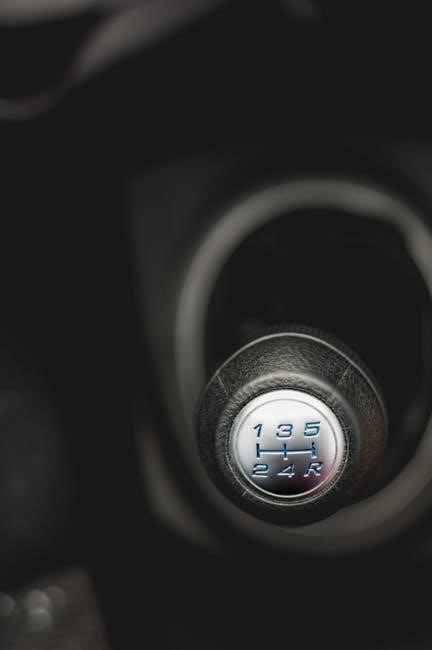Manual and auto-ranging multimeters are essential tools for measuring electrical parameters like voltage, current, and resistance, catering to different user needs and expertise levels.
Overview of Multimeters and Their Importance
Multimeters are versatile tools for measuring electrical parameters like voltage, current, and resistance. They are indispensable for diagnosing and troubleshooting circuits, ensuring safety and efficiency. While manual-ranging multimeters require users to select the appropriate range, auto-ranging models automatically adjust to the best range, offering convenience. Both types are crucial for professionals and hobbyists, providing accurate readings essential for electrical work. Understanding their differences helps users choose the right tool for their needs, ensuring precise measurements and reliable outcomes.
The Key Difference Between Manual and Auto Ranging Multimeters
The primary distinction lies in range selection. Manual-ranging multimeters require users to set the range for voltage, current, or resistance, offering precision but demanding expertise. Auto-ranging multimeters automatically adjust to the optimal range, enhancing speed and ease of use, especially for beginners. Manual models provide control for professionals, while auto-ranging models simplify the process, reducing errors. This difference defines their suitability for various users, with manual ideal for experts and auto-ranging perfect for those seeking convenience and efficiency in electrical measurements.

Manual Ranging Multimeters
Manual-ranging multimeters require users to set the measurement range for voltage, current, or resistance, offering precise control for professionals who need accuracy in electrical measurements.
What is Manual Ranging?
Manual ranging is a feature in manual-ranging multimeters where users must select the appropriate measurement range for voltage, current, or resistance. This process involves using a selector button or dial to choose the specific range based on the expected value of the measurement. Unlike auto-ranging, manual ranging requires the user to have some knowledge of the expected measurement range to ensure accuracy. While it offers more control and flexibility for experienced users, it can be time-consuming and may require multiple adjustments. This method is particularly useful in professional settings where precise measurements are critical, and the operator has prior knowledge of the expected values. Manual ranging also allows for better accuracy in specific applications, making it a preferred choice for advanced users who value precision over convenience. However, it demands a good understanding of electrical measurements and the ability to interpret the results effectively. For those familiar with electrical systems, manual ranging provides a high degree of customization and control, enabling tailored measurements that meet specific requirements. Despite the need for manual adjustments, this feature remains essential for professionals seeking exact and reliable data in their work.
Key Features of Manual Ranging Multimeters
Manual ranging multimeters offer precise control over measurements, requiring users to select the appropriate range for voltage, current, or resistance. They feature a selector dial or button for range adjustments, ensuring accuracy when the expected value is known. These multimeters often include multiple measurement functions, such as testing batteries, diodes, and continuity. They may also provide analogue bargraphs for quick signal changes and touch hold for stable readings. Manual ranging multimeters are durable and cost-effective, making them ideal for professionals and advanced users who prioritize control and accuracy in their electrical work.
Advantages of Manual Ranging Multimeters
Manual ranging multimeters offer precise control over measurements, ideal for professionals who know the expected value. They provide accurate readings by eliminating guesswork, and their durability makes them suitable for tough environments. These multimeters are cost-effective, with lower prices compared to auto-ranging models. They also ensure consistent measurements once the range is set, reducing errors. Additionally, manual models often require less maintenance and have fewer electronic components, contributing to their reliability and longevity. This makes them a practical choice for advanced users who value precision and control in their electrical work.

Auto Ranging Multimeters
Auto-ranging multimeters simplify measurements by automatically selecting the best range, offering ease of use and faster results. They are ideal for beginners and professionals seeking efficiency and accuracy.
What is Auto Ranging?
Auto ranging is a feature in digital multimeters that automatically selects the optimal measurement range for the input signal, ensuring accurate readings without manual adjustments. This eliminates the need to pre-select ranges, simplifying the process and reducing errors. The multimeter adjusts its range dynamically based on the measured value, providing convenience and efficiency. This capability is particularly useful in environments where speed and ease of use are prioritized, making auto-ranging multimeters a preferred choice for many users.
Key Features of Auto Ranging Multimeters
Auto ranging multimeters offer automatic range selection, eliminating manual adjustments and enhancing measurement efficiency. They provide high precision with features like True-RMS measurements and 6000-count resolution. Advanced models include touch hold for stable readings, analogue bargraphs for fast changes, and backlit displays for visibility. These multimeters support multiple functions such as voltage, current, resistance, and frequency testing. Their user-friendly design makes them ideal for professionals and beginners alike, ensuring quick and accurate results across various applications.
Advantages of Auto Ranging Multimeters
Auto-ranging multimeters offer unparalleled convenience and efficiency by automatically selecting the optimal measurement range, eliminating manual adjustments. This feature reduces human error and saves time, especially for beginners. They provide faster measurement capabilities and seamless transitions between ranges, making them ideal for dynamic testing environments. Additionally, auto-ranging models often include advanced features like touch hold for stable readings and backlit displays, enhancing usability and accuracy. These benefits make auto-ranging multimeters a preferred choice for professionals and hobbyists seeking precision and efficiency.
Comparison of Manual and Auto Ranging Multimeters
Manual multimeters require users to set the range, offering precision, while auto-ranging models automatically adjust, saving time but potentially sacrificing some accuracy for convenience.
Speed and Convenience
Auto-ranging multimeters excel in speed, automatically adjusting to the optimal range for measurements, which is ideal for quick diagnostics and reducing human error. In contrast, manual-ranging models require users to set the range themselves, slowing down the process but offering more control. For professionals, manual ranging allows precise adjustments, while auto-ranging is more user-friendly for beginners, enabling faster and more efficient measurements without manual adjustments.

ease of Use for Beginners vs. Professionals
Ease of Use for Beginners vs. Professionals
Auto-ranging multimeters are more beginner-friendly, as they eliminate the need to manually select ranges, reducing complexity and the risk of errors. Professionals, however, often prefer manual-ranging models for their precision and control, allowing for tailored measurements in specialized tasks. While auto-ranging offers simplicity and speed, manual-ranging caters to advanced users who value accuracy and customization in their work, making each type suited to different skill levels and applications;
Applications and Use Cases
Auto-ranging multimeters are ideal for general electrical work, troubleshooting, and DIY projects due to their ease of use and quick measurements. Manual-ranging multimeters excel in precise, specialized tasks where exact range control is critical, such as in industrial or advanced engineering applications. Professionals often prefer manual-ranging for its accuracy, while beginners and homeowners favor auto-ranging for simplicity. Both types are versatile, catering to different scenarios, ensuring efficient problem-solving across various electrical environments.

How to Choose the Right Multimeter for Your Needs
Selecting the right multimeter involves considering your skill level, budget, and application needs. Assess whether auto-ranging convenience or manual precision best suits your tasks.
Considerations for DIYers and Homeowners
For DIYers and homeowners, an auto-ranging multimeter is often ideal due to its ease of use and convenience. It eliminates the need to manually select ranges, reducing the learning curve and potential errors. Auto-ranging models are user-friendly and provide quick measurements, making them perfect for basic tasks like voltage testing or continuity checks. However, if precision and control are preferred, manual ranging can offer better accuracy for specific applications. Budget-friendly options with essential features are readily available, ensuring accessibility for casual users.
Considerations for Professionals and Advanced Users
Professionals and advanced users often prefer manual ranging multimeters for their precision and control over measurements. These devices allow experts to select specific ranges, ensuring accuracy and adaptability in complex scenarios. While auto-ranging models offer convenience, manual models provide the flexibility needed for specialized tasks and high-precision applications. Advanced features like true-RMS measurements and higher resolution are typically found in manual models, making them indispensable for professionals requiring reliable and detailed data in demanding environments.
Safety Precautions and Best Practices
Always follow manufacturer guidelines, use correct probes, and avoid touching live circuits. Ensure proper handling to prevent electrical shocks and damage to the multimeter or circuit.
General Safety Guidelines for Using Multimeters

Always set the multimeter to the correct range before measurement to avoid damage or electrical shocks. Use appropriate probes and ensure they are not damaged. Avoid touching live circuits with bare hands. Never measure voltage or current beyond the multimeter’s rated capacity. Keep the device away from extreme temperatures and moisture. Regularly inspect the multimeter and its leads for wear. Follow the manufacturer’s instructions for calibration and maintenance. Turn off the power supply before testing circuits whenever possible to ensure safe operation.
Specific Safety Tips for Manual and Auto Ranging Models
For manual-ranging multimeters, always start with the highest range to avoid overvoltage damage. With auto-ranging models, ensure the function is correctly selected before measurement. Never measure voltage or current exceeding the multimeter’s specifications. Regularly inspect probes for damage and ensure proper connections. Use the correct input jacks to prevent overload. For auto-ranging, avoid switching ranges during measurement. Keep fingers away from metal parts and avoid live circuits. Store the multimeter in a dry, cool place to maintain accuracy and safety.
Frequently Asked Questions (FAQs)

What is the difference in measurement speed? Auto-ranging multimeters are faster as they select ranges automatically, while manual-ranging requires user input. Which type is more suitable for beginners? Auto-ranging multimeters are generally more user-friendly and recommended for those new to electrical measurements.
What is the Difference in Measurement Speed?
Auto-ranging multimeters are significantly faster in measurement speed as they automatically adjust to the optimal range, eliminating the need for manual selection. This feature is particularly advantageous in dynamic environments where quick readings are essential. Manual-ranging multimeters require the user to select the appropriate range, which can slow down the process, especially for those less experienced. The speed difference is crucial for professionals who need rapid, accurate measurements, making auto-ranging models more efficient in such scenarios.
Which Type is More Suitable for Beginners?
Auto-ranging multimeters are generally more suitable for beginners due to their simplicity and ease of use. They automatically select the appropriate measurement range, eliminating the need for manual adjustments and reducing the risk of errors. This makes them ideal for users who are still learning how to operate multimeters effectively. Manual-ranging models require more knowledge and experience to select the correct range, which can be overwhelming for newcomers. Auto-ranging models provide a more straightforward experience, allowing beginners to focus on learning the fundamentals of electrical measurements without added complexity.
Final Thoughts on Manual vs. Auto Ranging Multimeters
Manual and auto-ranging multimeters serve distinct purposes, catering to different users. Auto-ranging models simplify operations for beginners, offering quick, accurate measurements without manual adjustments. They are ideal for everyday tasks and DIY projects, where speed and ease are prioritized. Conversely, manual-ranging multimeters provide precise control, appealing to professionals who need exact measurements and understand the nuances of range selection. Both types are indispensable tools, each excelling in their respective scenarios, making them essential for various electrical applications and user expertise levels.
Recommendations for Different User Scenarios
For beginners and DIY enthusiasts, an auto-ranging multimeter is recommended due to its ease of use and automatic range selection, ensuring quick and accurate measurements. Professionals or advanced users may prefer manual-ranging models for precise control and customization, especially in complex or specialized applications. Homeowners should opt for auto-ranging multimeters for common tasks, while professionals requiring high accuracy and flexibility will benefit from manual-ranging options. This ensures that users choose tools tailored to their specific needs and expertise levels for optimal performance and safety.



